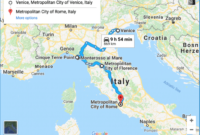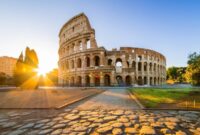Rome points of interest – Embark on an extraordinary journey through the Eternal City as we unveil the captivating points of interest that have shaped Rome’s rich history and vibrant culture. From iconic landmarks to architectural wonders and culinary delights, prepare to be mesmerized by the treasures that await you.
As you traverse the cobbled streets and soak in the timeless allure of Rome, let this guide serve as your trusted companion, leading you to hidden gems and unforgettable experiences that will leave an everlasting imprint on your soul.
Historical Landmarks
Rome, the “Eternal City,” boasts an array of historical landmarks that have shaped the course of civilization. From the iconic Colosseum to the awe-inspiring Pantheon, these architectural marvels stand as testaments to the grandeur and ingenuity of ancient Rome.
The Colosseum
Constructed between 70 and 80 AD under the reign of Emperor Vespasian, the Colosseum was the largest amphitheater ever built in the Roman Empire. It was designed to host gladiatorial contests, public spectacles, and other forms of entertainment. The Colosseum’s elliptical shape and tiered seating allowed for optimal viewing for up to 80,000 spectators.
The underground chambers beneath the arena housed gladiators, animals, and equipment, while a complex system of tunnels and elevators facilitated the efficient movement of performers and animals. The Colosseum’s grandeur and historical significance have made it one of the most recognizable landmarks in the world.
Architectural Wonders
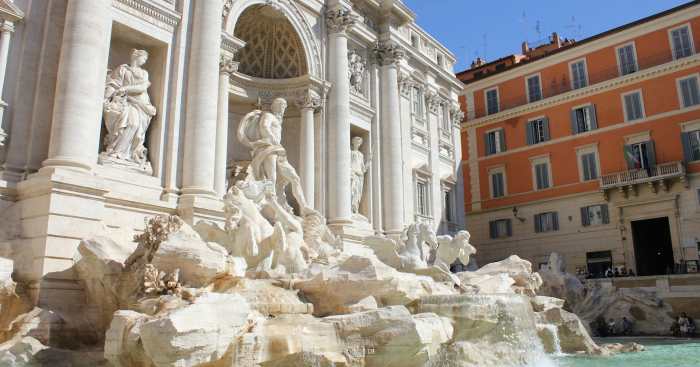
Rome, the Eternal City, is renowned for its architectural marvels that have captivated visitors for centuries. From the iconic Trevi Fountain to the grandeur of St. Peter’s Basilica, these structures showcase the ingenuity and artistry of ancient and Renaissance masters.
The Trevi Fountain
The Trevi Fountain, a Baroque masterpiece, is a symbol of Rome’s artistic heritage. Constructed in the 18th century, it features an elaborate facade adorned with intricate sculptures and a cascading waterfall. The fountain’s central figure is Oceanus, the god of the sea, surrounded by Tritons and horses.
Visitors toss coins into the fountain for good luck and to ensure their return to Rome.
The Spanish Steps
The Spanish Steps, an iconic staircase connecting the Piazza di Spagna to the Trinita dei Monti church, is a popular tourist destination. Designed in the 18th century, the steps are made of travertine marble and feature 135 steps divided into three flights.
The steps are adorned with fountains and statues, and their elegant design has inspired countless artists and photographers.
St. Peter’s Basilica, Rome points of interest
St. Peter’s Basilica, the largest church in the world, is a testament to the grandeur and spiritual significance of Rome. Built over the tomb of St. Peter, the apostle, the basilica has been a pilgrimage site for centuries. The church’s immense dome, designed by Michelangelo, dominates the Roman skyline and is an architectural marvel.
The basilica’s interior is equally impressive, featuring elaborate mosaics, sculptures, and artwork by renowned artists such as Bernini and Raphael.
With its ancient ruins, captivating museums, and delectable cuisine, Rome captivates travelers with an abundance of points of interest. To fully experience the Eternal City’s allure, consult our comprehensive guide on how to visit Rome . This invaluable resource provides practical tips on planning your itinerary, navigating the city, and immersing yourself in the unparalleled charm that defines Rome.
Cultural Attractions: Rome Points Of Interest
Rome is a city brimming with cultural treasures, from world-renowned museums to awe-inspiring churches and vibrant street art. This guide explores the must-visit cultural attractions in Rome, offering insights into their collections, architectural wonders, and historical significance.
Whether you’re an art enthusiast, a history buff, or simply seeking unique experiences, Rome’s cultural offerings promise an unforgettable journey.
When visiting Rome, you’ll be spoiled for choice when it comes to points of interest. From the iconic Colosseum to the awe-inspiring Vatican City, there’s something for everyone. But if you’re interested in the ancient Roman period, be sure to check out the ancient Roman Forum, where you can explore the ruins of temples, government buildings, and markets that once formed the heart of the Roman Empire.
After soaking up the history, you can head to the nearby Roman Baths of Caracalla to relax in the thermal waters just like the ancient Romans did.
Vatican Museums and the Borghese Gallery
Rome’s art scene is unparalleled, with two of its most renowned museums being the Vatican Museums and the Borghese Gallery. Both boast extraordinary collections, but they differ in scope and focus.
| Vatican Museums | Borghese Gallery | |
|---|---|---|
| Location | Vatican City | Villa Borghese |
| Collection | Vast and comprehensive, including Egyptian, Greek, Roman, and Renaissance art | Smaller and focused on 16th and 17th-century Italian art, especially Bernini and Caravaggio |
| Highlights | Sistine Chapel, Raphael Rooms, Laocoön and His Sons | Apollo and Daphne, David, Pauline Bonaparte as Venus Victrix |
| Crowds | Very large, especially during peak season | More manageable, but still requires advance booking |
Culinary Delights
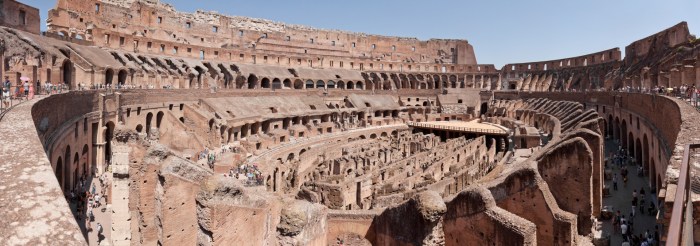
Rome’s culinary scene is a testament to the city’s rich history and cultural diversity. Traditional Roman cuisine, with its unique flavors and ingredients, has evolved over centuries, influenced by various civilizations that have left their mark on the city.From ancient Roman banquets to modern-day trattorias, food has always played a central role in Roman life.
Today, visitors can indulge in authentic Italian dining experiences, savoring the flavors that have delighted generations of Romans.
Best Restaurants in Rome
Rome is home to a vast array of restaurants, each offering its own interpretation of traditional Roman cuisine. From Michelin-starred establishments to cozy trattorias, there’s something for every taste and budget.Here are a few highly recommended restaurants for an authentic Roman dining experience:
- Osteria del Gambero Rosso: Renowned for its classic Roman dishes, such as carbonara and cacio e pepe.
- Trattoria Da Augusto: A charming family-run restaurant serving traditional Roman fare in a warm and inviting atmosphere.
- Ristorante Borghiciana Pastificio Artigianale: A modern restaurant specializing in handmade pasta dishes, offering a wide range of sauces and toppings.
Types of Pasta Dishes
Pasta is a staple of Roman cuisine, with a vast array of shapes and sauces to choose from. Here’s a guide to some of the most common types of pasta dishes found in Rome:
| Pasta Shape | Sauce | Toppings |
|---|---|---|
| Spaghetti | Carbonara (eggs, cheese, pancetta) | None |
| Bucatini | Amatriciana (tomatoes, guanciale, pecorino cheese) | None |
| Rigatoni | Cacio e pepe (cheese, black pepper) | None |
| Gnocchi | Pomodoro (tomato sauce) | Basil, mozzarella |
| Ravioli | Ricotta and spinach | Tomato sauce, butter and sage |
Final Summary
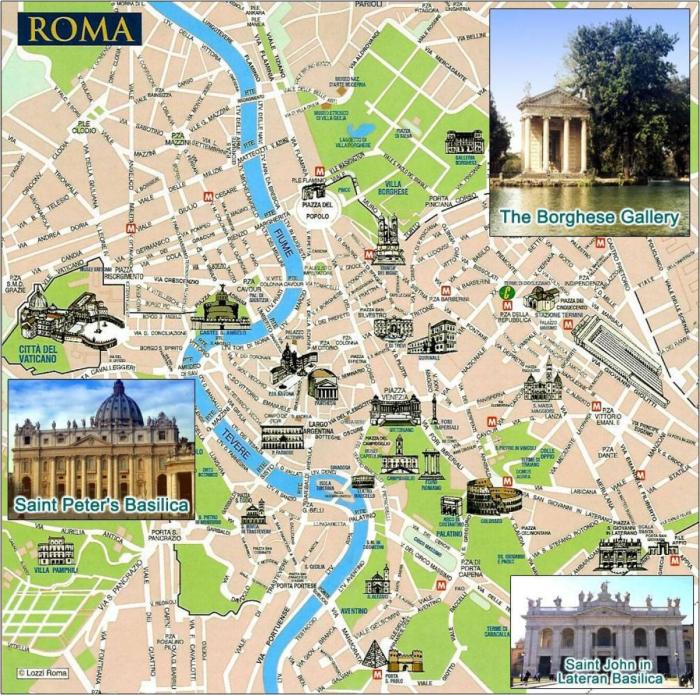
As you bid farewell to the captivating city of Rome, may the memories you have forged amidst its ancient ruins, breathtaking architecture, and delectable cuisine remain etched in your heart forever. Let the essence of Rome continue to inspire you, igniting a passion for exploration and a deep appreciation for the wonders that our world holds.
